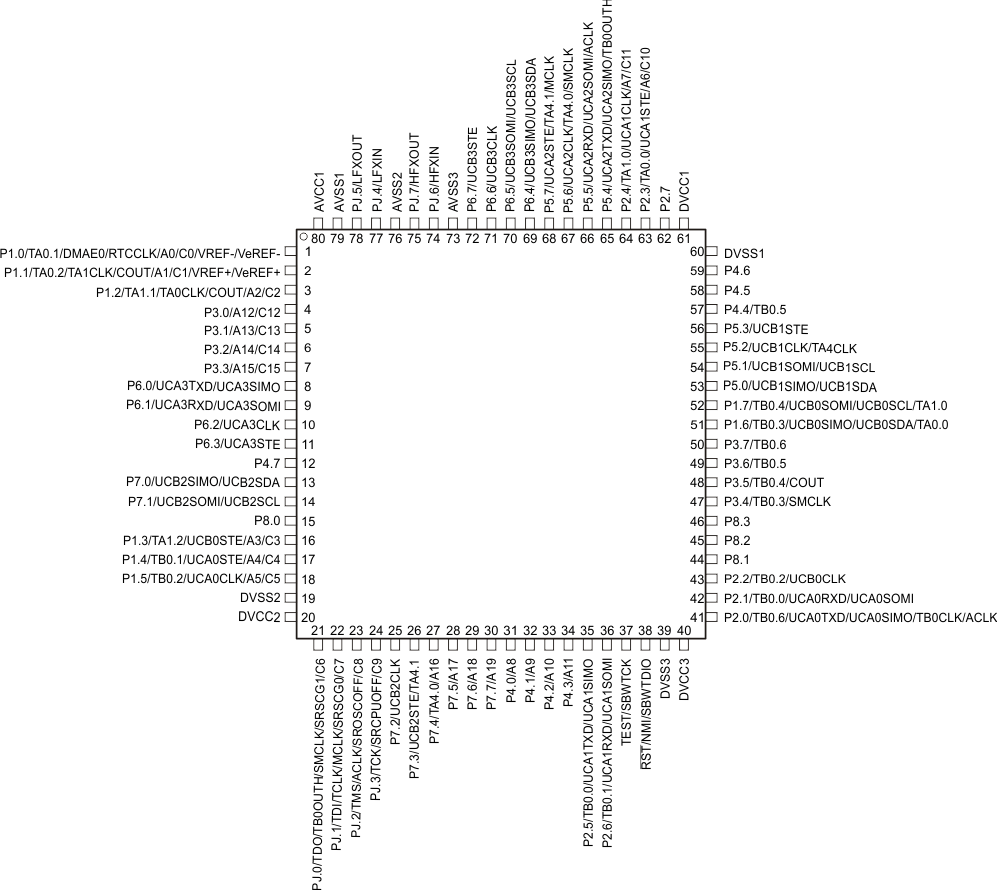SLAU678C March 2016 – November 2022
- Abstract
- Trademarks
- 1Getting Started
- 2Hardware
- 3Software Examples
- 4Resources
- 5FAQ
- 6Schematics
- 7Revision History
2.2.1 MSP430FR5994 MCU
The MSP430FR5994 is the next device in TI's new ULP FRAM technology platform. FRAM is a cutting-edge memory technology that combines the best features of flash and RAM into one nonvolatile memory. For more information on FRAM, see www.ti.com/fram.
Device features include:
- 1.8-V to 3.6-V operation
- 16-bit RISC architecture up to 16-MHz system clock and 8-MHz FRAM access
- 256KB of FRAM and 8KB of SRAM
- 16-channel 12-bit ADC
- 16-channel analog comparator
- Six 16-bit timers with seven capture/compare registers each
- 6-channel direct memory access (DMA)
- 128-bit or 256-bit AES
- 32-bit hardware multiplier (MPY)
- 68 GPIOs
Figure 2-3 shows the pinout of the MSP430FR5994 MCU in the 80-pin PN package.
 Figure 2-3 MSP430FR5994 Pinout
Figure 2-3 MSP430FR5994 Pinout